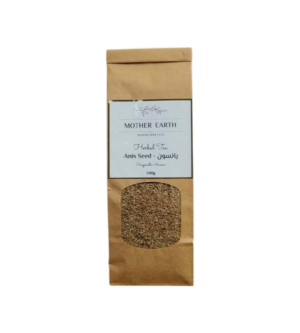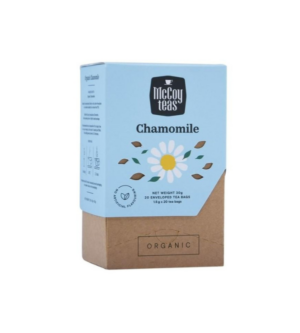YOGI TEA MOON SALUTATION .
The moon has a highly energising power. It not only influences gravity and therefore the tides, it is also said that the moon can influence our own wellbeing. You might already have noticed that you don’t sleep so well when there’s a full moon.
In some forms of yoga, it is said that (as well as chakras) there are also precisely localised energy centres in the body that react to the moon’s energy: these are known as moon centres, which are activated during the various phases of the moon. Women have eleven of these moon centres. One of them, for example, is in the eyebrows. When the moon’s energy is in this particular moon centre, we often find ourselves in a phase when we are full of ideas, feel creative and make plans.
The moon’s energy changes every 2.5 days and runs through a 28-day cycle. Just as the moon’s energy changes and follows a cycle from one new moon to the next, our feelings and the way we see the world can also change depending on the phase of the moon. Men have only one moon centre, which is at the chin, which means they have far fewer moon centres than women. The moon, also known as la Luna, is a symbol of female strength and is the opposite pole to the male energy of the sun.
The Moon Salutation originated in Hatha yoga. It is made up of 17 tranquil yoga asanas, which together form a flow of movements practised as a sequence in harmony with our breathing, which have an energising effect on the body. Circular movements with the arms imitate the different phases of the moon’s cycle: starting with the new moon, it goes through the moon’s growing phases until the full moon can be admired in all its beauty. The full moon then gradually wanes until a new cycle begins.
Just as the moon represents an opposing and cooling balance to the sun, the “Chandra Namaskar” Moon Salutation is a counterpart to the Sun Salutation. Chandra Namaska simply means “greeting the moon”.
While the Sun Salutation involves greeting the warm, stimulating and outwardly directed energy (yang) of the sun and the start of a bright and beautiful day, the Moon Salutation welcomes the calming, inwardly directed and energising power (yin) of the moon. Its cooling effect makes the Moon Salutation particularly suitable for practising in the summer months.
What could be better than rounding off your yoga practice with a delicious cup of tea after your Moon Salutation? YOGI TEA Moon Salutation is a blend of eucalyptus and minty notes to open up the soul, while turmeric is said to have a grounding effect. White hibiscus and lemon balm regenerate the body and mind and release new energy. This special Ayurvedic recipe with a mix of calming and energising ingredients can help you to find inner balance.
The Moon Salutation tea is ideal for those times when you feel the need for recovery and regeneration or in the early evening for a relaxed end to the day.
Ingredients:
Lemongrass, turmeric root (17%), white hibiscus (13%), licorice, lemon balm (9%), eucalyptus (7%), dried lime fruit, peppermint (3%), orange peel, lavender flowers, lemon peel, hops, black pepper, eucalyptus oil.
Additional Information
$7.50
Out of stock
The moon has a highly energising power. It not only influences gravity and therefore the tides, it is also said that the moon can influence our own wellbeing. You might already have noticed that you don’t sleep so well when there’s a full moon.
In some forms of yoga, it is said that (as well as chakras) there are also precisely localised energy centres in the body that react to the moon’s energy: these are known as moon centres, which are activated during the various phases of the moon. Women have eleven of these moon centres. One of them, for example, is in the eyebrows. When the moon’s energy is in this particular moon centre, we often find ourselves in a phase when we are full of ideas, feel creative and make plans.
The moon’s energy changes every 2.5 days and runs through a 28-day cycle. Just as the moon’s energy changes and follows a cycle from one new moon to the next, our feelings and the way we see the world can also change depending on the phase of the moon. Men have only one moon centre, which is at the chin, which means they have far fewer moon centres than women. The moon, also known as la Luna, is a symbol of female strength and is the opposite pole to the male energy of the sun.
The Moon Salutation originated in Hatha yoga. It is made up of 17 tranquil yoga asanas, which together form a flow of movements practised as a sequence in harmony with our breathing, which have an energising effect on the body. Circular movements with the arms imitate the different phases of the moon’s cycle: starting with the new moon, it goes through the moon’s growing phases until the full moon can be admired in all its beauty. The full moon then gradually wanes until a new cycle begins.
Just as the moon represents an opposing and cooling balance to the sun, the “Chandra Namaskar” Moon Salutation is a counterpart to the Sun Salutation. Chandra Namaska simply means “greeting the moon”.
While the Sun Salutation involves greeting the warm, stimulating and outwardly directed energy (yang) of the sun and the start of a bright and beautiful day, the Moon Salutation welcomes the calming, inwardly directed and energising power (yin) of the moon. Its cooling effect makes the Moon Salutation particularly suitable for practising in the summer months.
What could be better than rounding off your yoga practice with a delicious cup of tea after your Moon Salutation? YOGI TEA Moon Salutation is a blend of eucalyptus and minty notes to open up the soul, while turmeric is said to have a grounding effect. White hibiscus and lemon balm regenerate the body and mind and release new energy. This special Ayurvedic recipe with a mix of calming and energising ingredients can help you to find inner balance.
The Moon Salutation tea is ideal for those times when you feel the need for recovery and regeneration or in the early evening for a relaxed end to the day.
Ingredients:
Lemongrass, turmeric root (17%), white hibiscus (13%), licorice, lemon balm (9%), eucalyptus (7%), dried lime fruit, peppermint (3%), orange peel, lavender flowers, lemon peel, hops, black pepper, eucalyptus oil.
| Weight | 17 kg |
|---|





Reviews
There are no reviews yet.